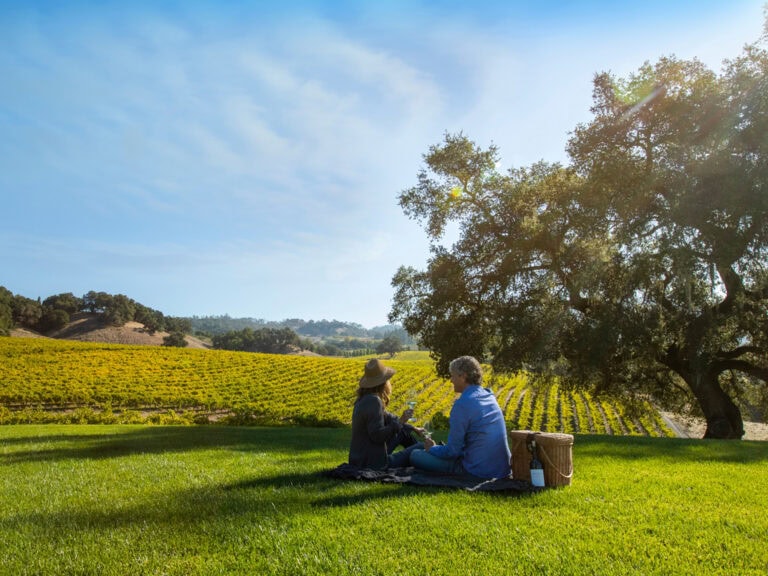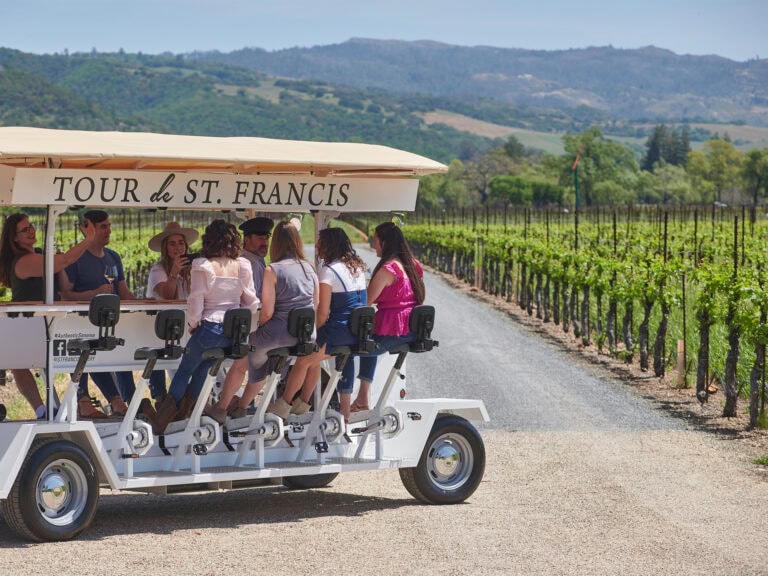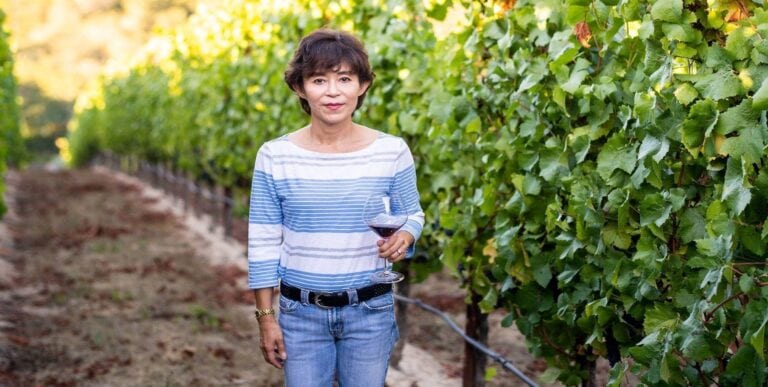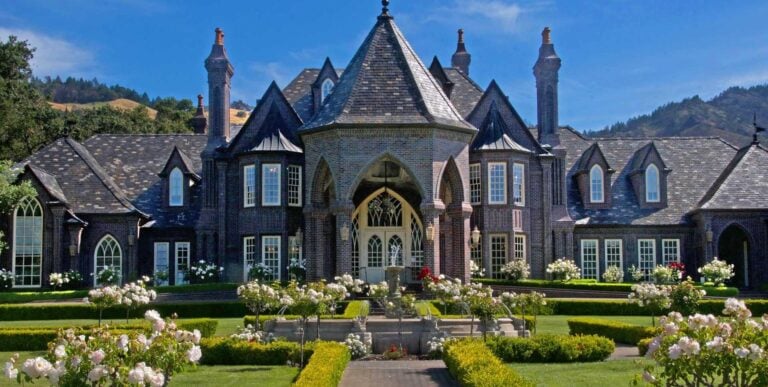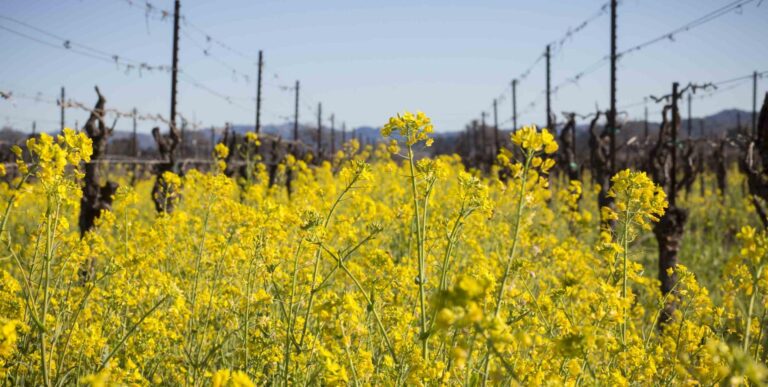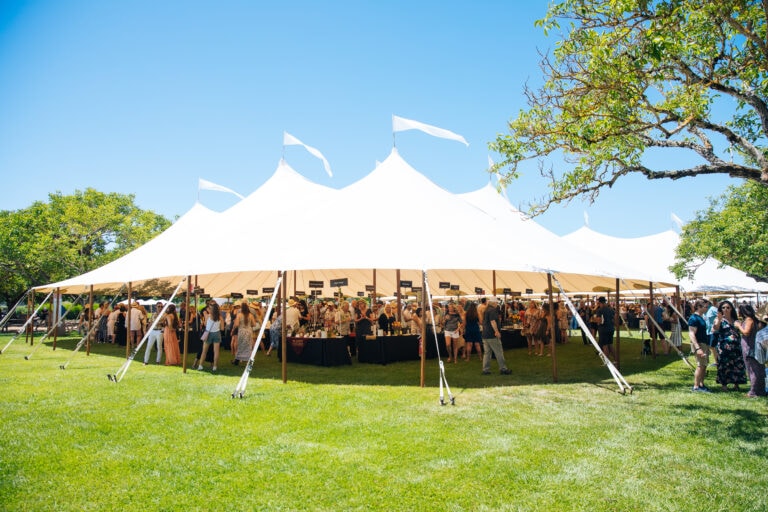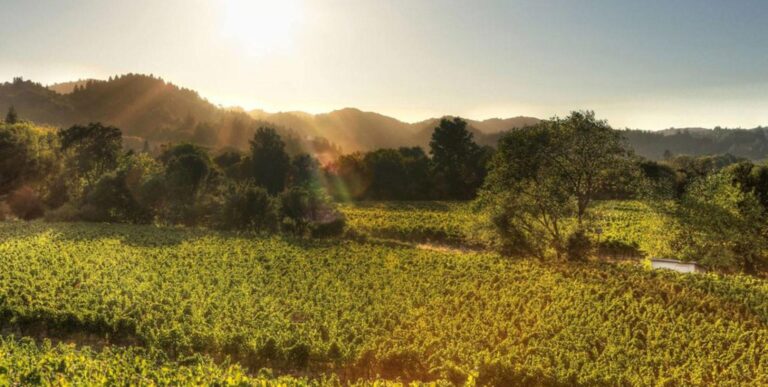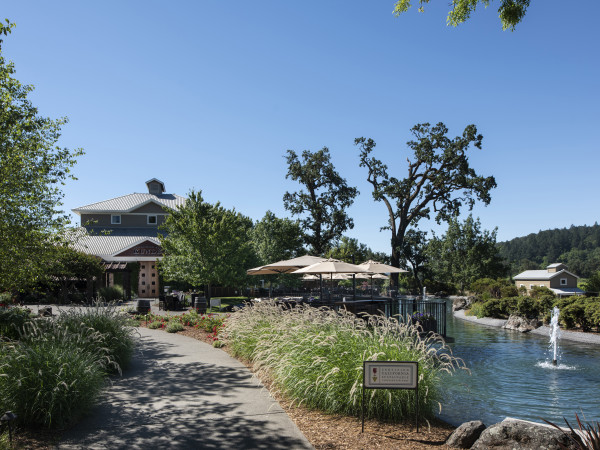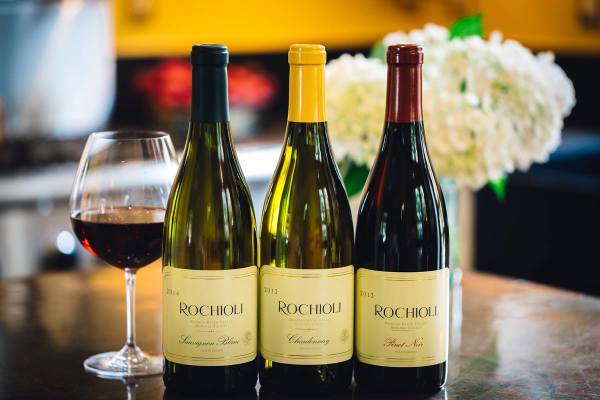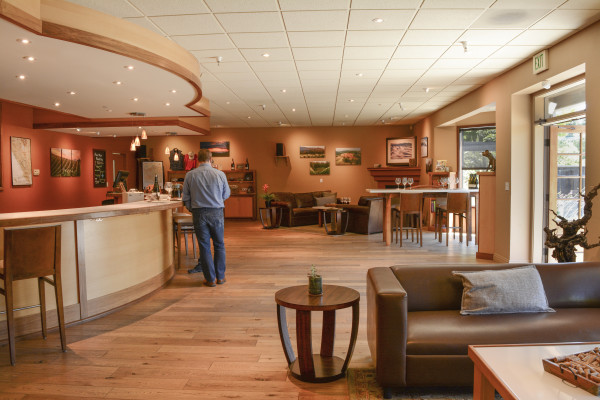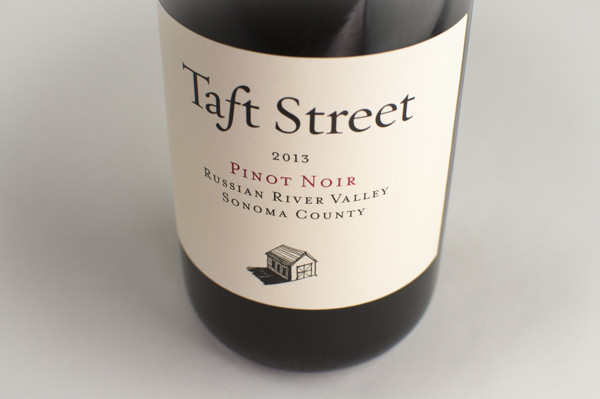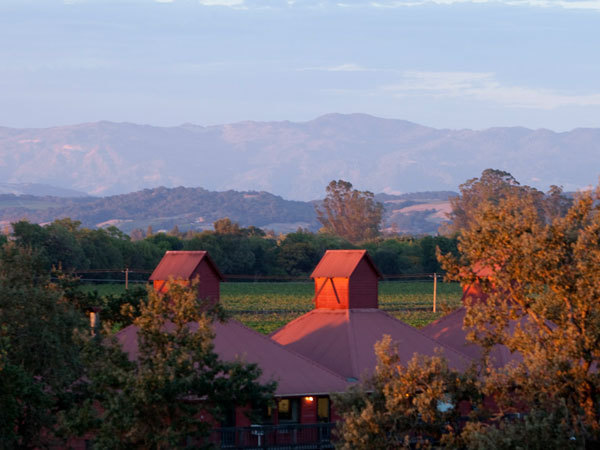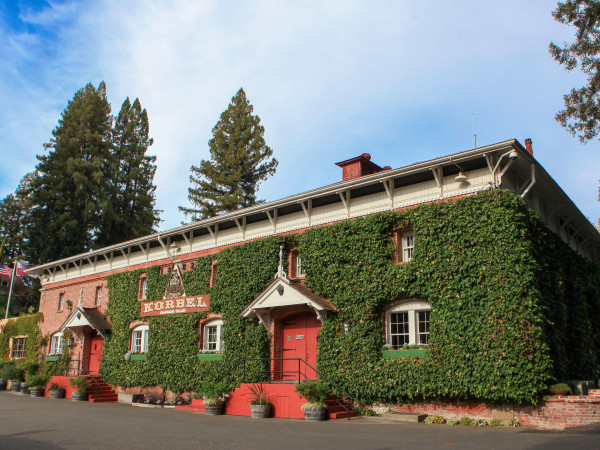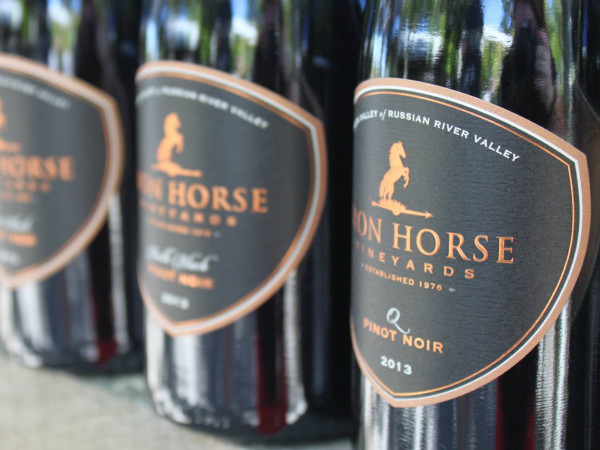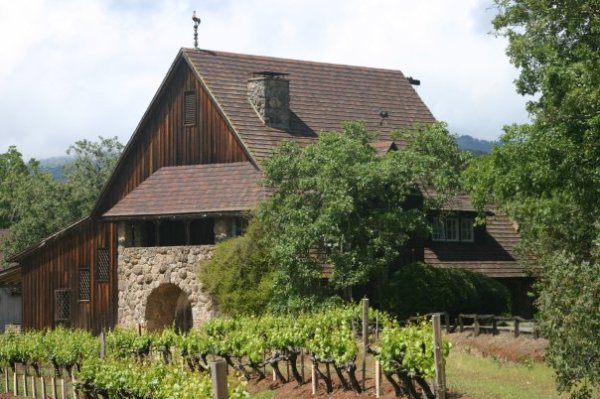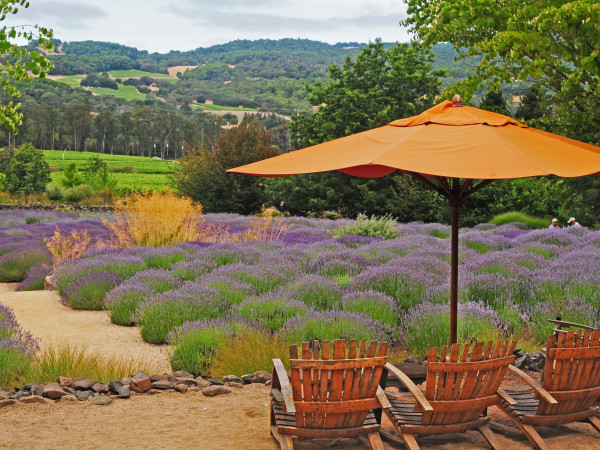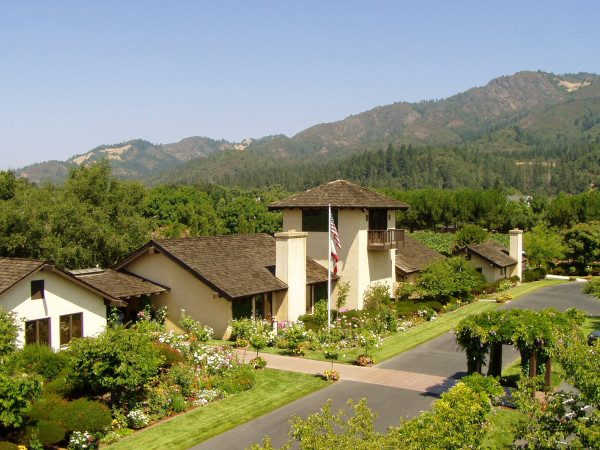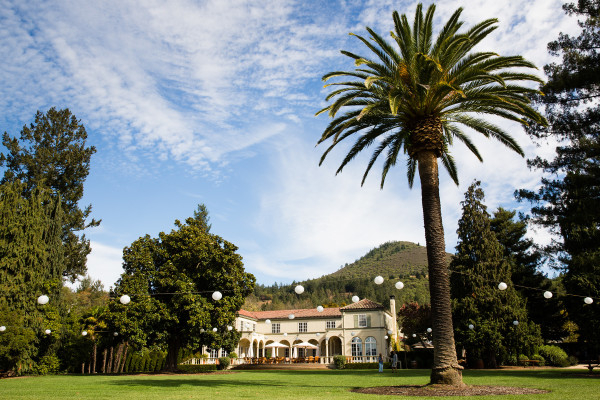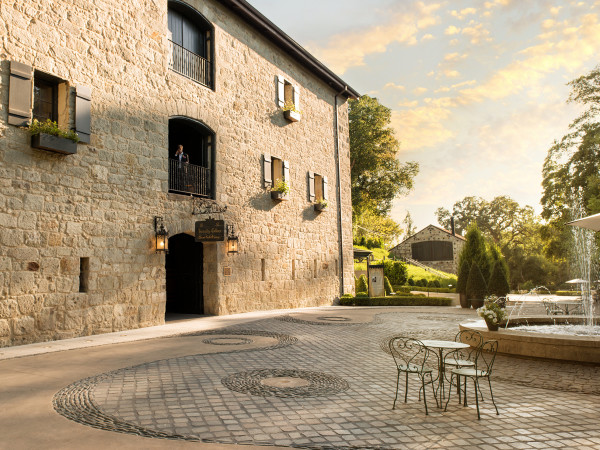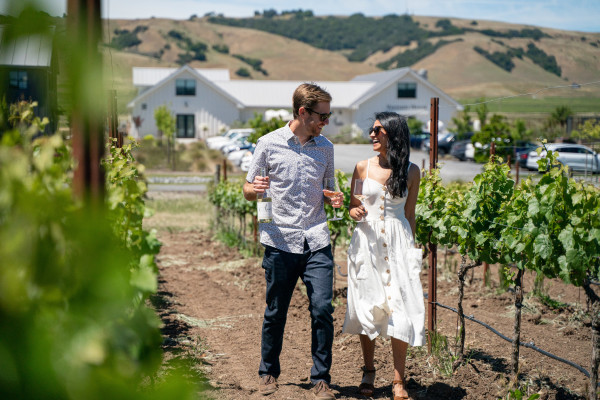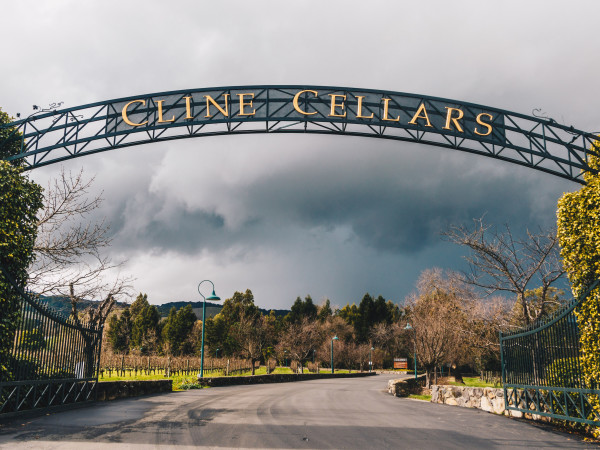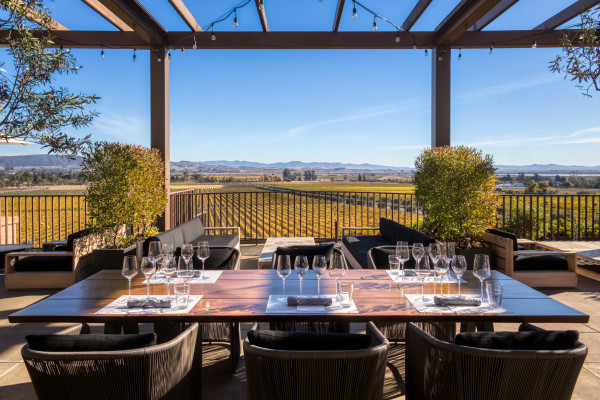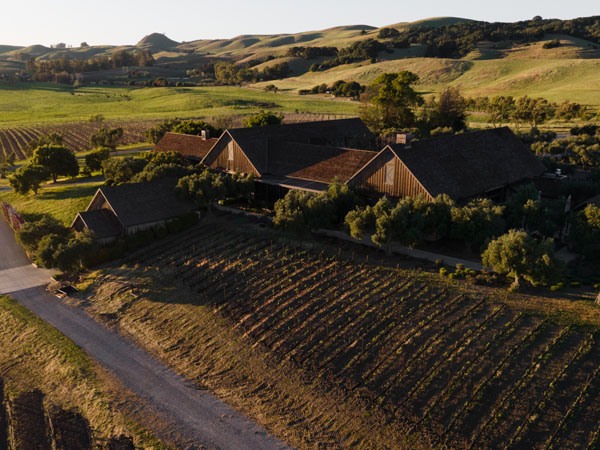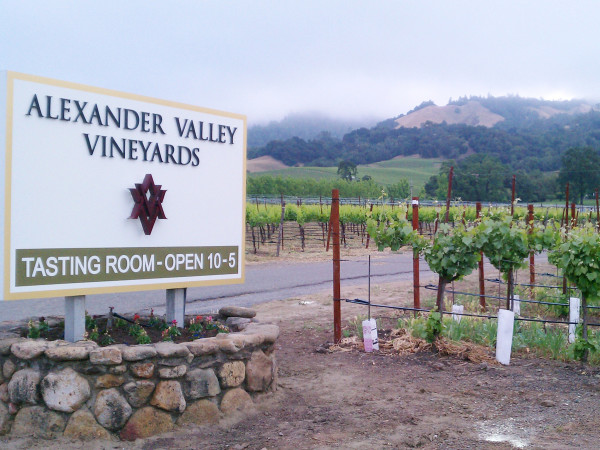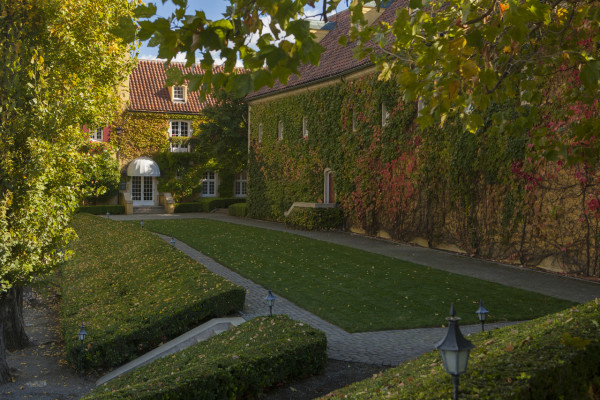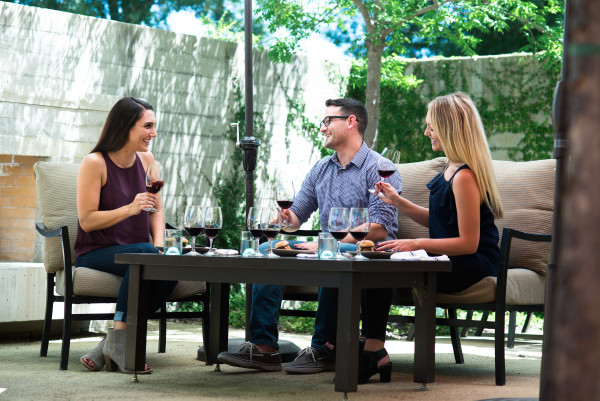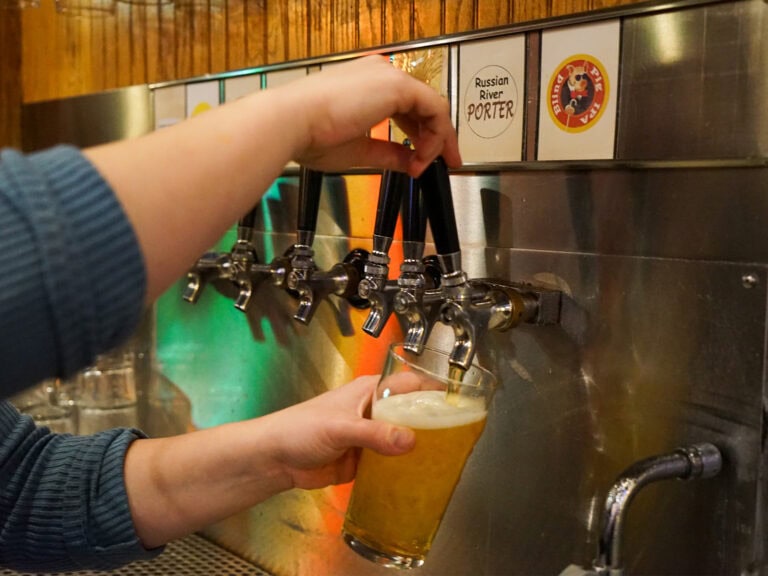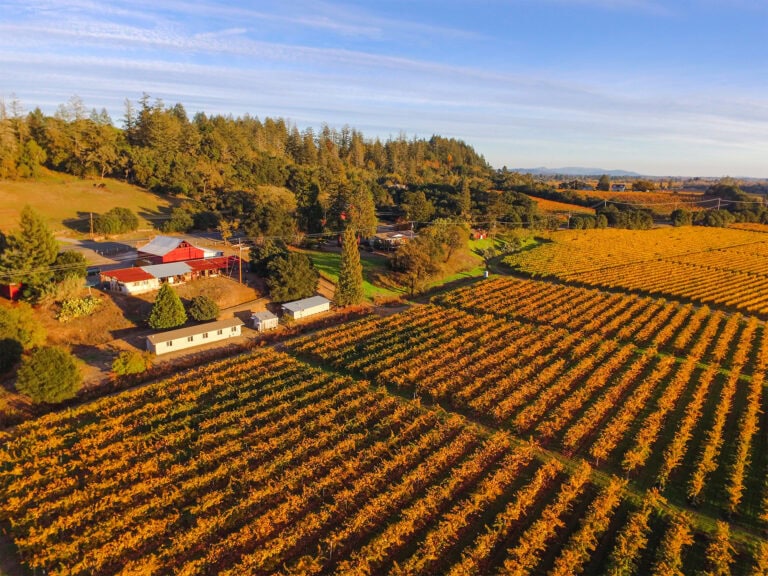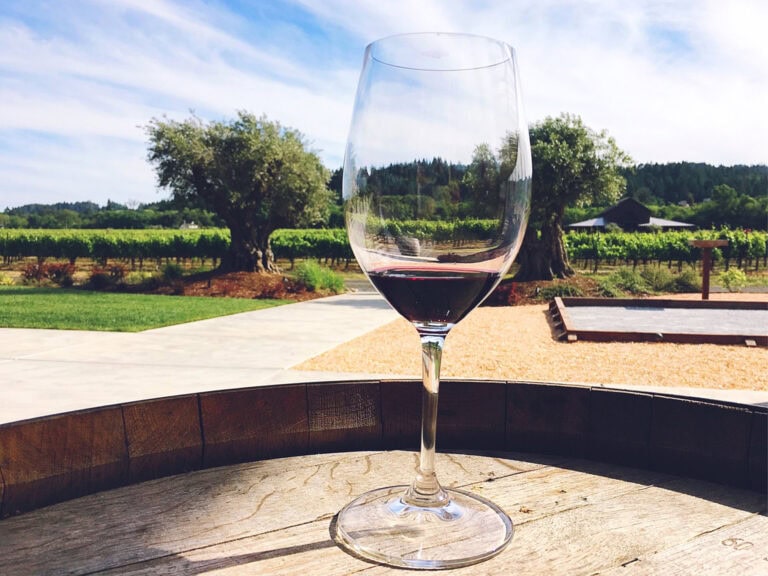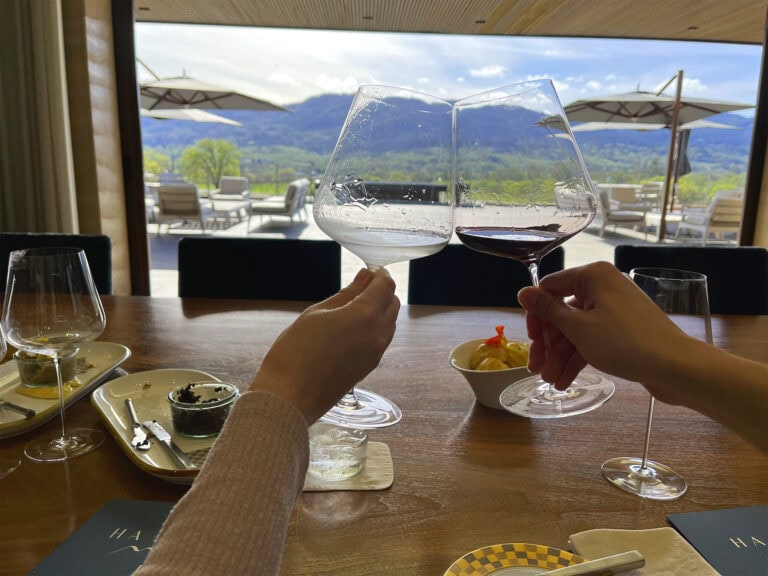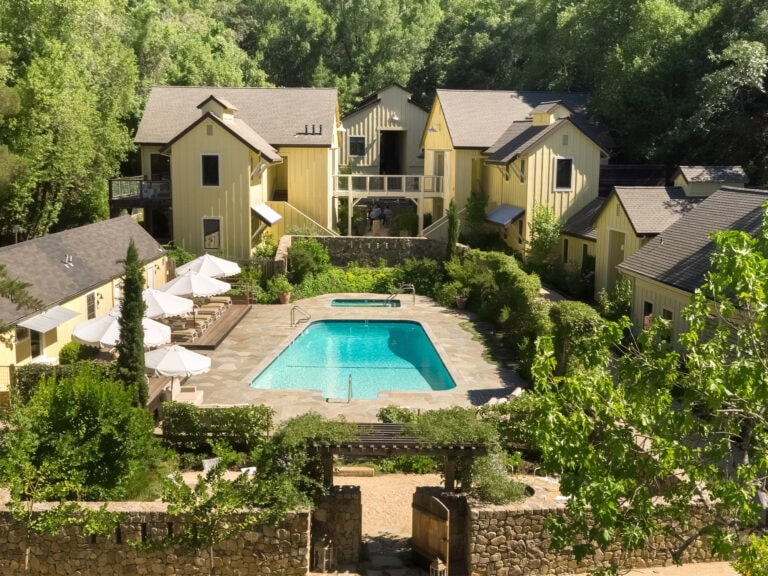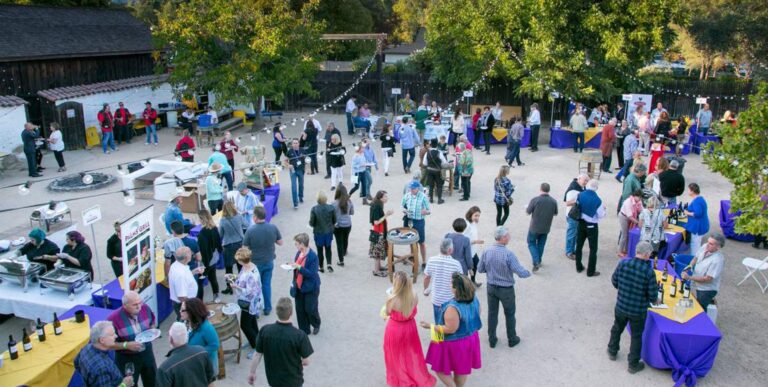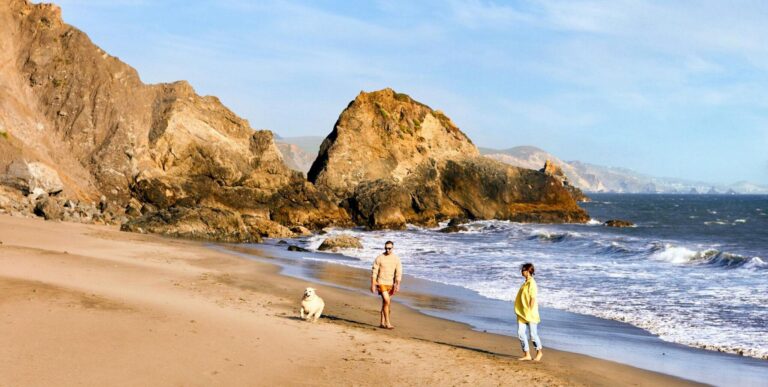The History of Chardonnay
Both the queen and the workhorse of Sonoma County wine, Chardonnay dominates here almost as much as in the Burgundy region of France, its ancestral home. Some of Sonoma County’s most coveted and expensive bottles of wine are Chardonnay, but so are the bulk of our affordable, everyday white wines—and all price points in between.
Chardonnay Key Facts

As of 2021, Chardonnay was the fifth most widely planted grape in the world, and the top white wine grape planted in Sonoma County. During the 2021 harvest, 66,264 tons of Sonoma County Chardonnay were crushed for wine production, while Pinot Noir’s local tonnage was less than 48,000.
The Chardonnay vine buds out relatively early, with slightly rounded leaves— similar in appearance to Pinot Noir. Grape clusters are small to medium-sized with round berries that turn yellowish-green after veraison, and may become yellow or brownish-green by harvest. Some clones of Chardonnay are prized for producing a “hens and chicks” pattern of alternately large and tiny berries (French vignerons call it millerandage).
Primary fruit aromas and flavors in varietal Chardonnay range from lean citrus to sweeter Meyer lemon, from fresh yellow apple to baked apple, and in warmer growing areas, into the tropics with mango and pineapple.
Chardonnay: the Burgundian Backstory
Most white wine from Burgundy is 100% Chardonnay, but the varietal is rarely listed on the label (and only for value-driven wines when it is). White Burgundy is traditionally labeled with its appellation or village name: Puligny-Montrachet and Meursault are among the best known. Neighboring regions Chablis and Mâcon produce their own distinctive styles of Chardonnay.
Chardonnay was long thought to be a variant of the highly regarded Pinot Noir grape, and was often misidentified as Pinot Blanc. It didn’t help matters that it was also known by various other names: White Pinot, Pinot Chardonnay, and even Pinot Blanc Chardonnay. In the 1990s, DNA fingerprinting revealed that Chardonnay is the child of Pinot Noir and Gouais Blanc, a white grape from Roman times that made lesser wines.
Chardonnay in Sonoma County
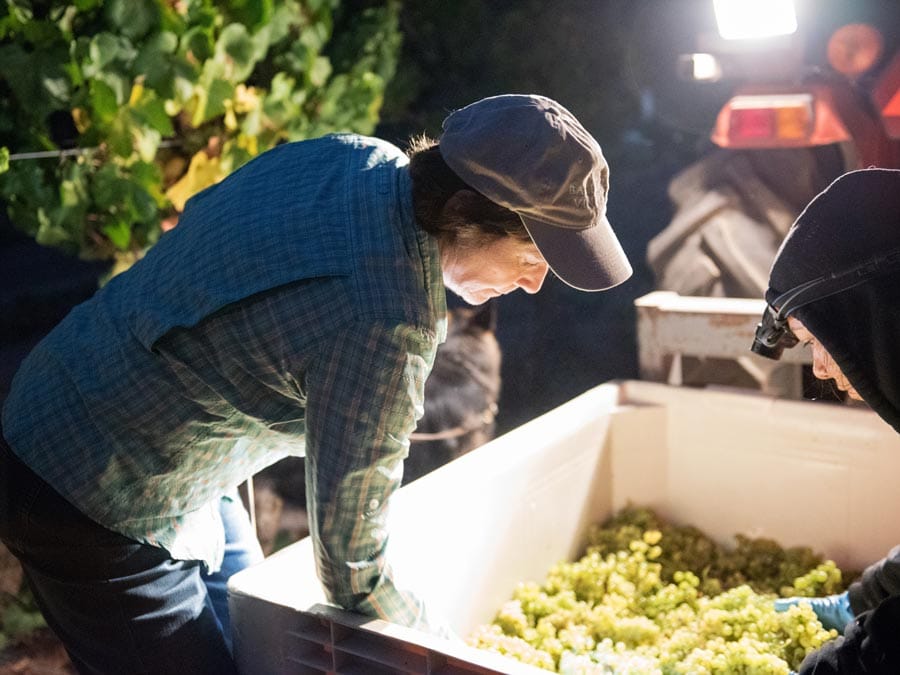
Despite its good reputation in France, Chardonnay was slow to be adopted by Sonoma County wineries and grape growers. In his viticultural reports from the late 1880s, legendary California viticulture professor E.W. Hilgard calls Chardonnay by the name “pinot chardonay;” around this same time, grapegrower John H. Drummond began to import some of the county’s first Chardonnay for his Kenwood vineyard, now part of the Kunde Family Winery property. However, the grape remained locally obscure for almost a century.
Everything changed for Chardonnay in 1976, when, in a blind tasting since dubbed the “Judgement of Paris,” French wine experts judged Chateau Montelena’s 1973 Chardonnay the better of several white Burgundies from top vineyards in Montrachet and Meursault. Although Montelena is a Napa Valley winery, the majority of the fruit that went into the 1973 Chardonnay came from Sonoma County vineyards from Bacigalupi Vineyards.
Today, no other white grape approaches Chardonnay’s total acreage in Sonoma County, second only to the vast plantings in Monterey County. According to the 2021 Grape Crush Report, Sonoma County growers receive the state’s second-highest price for their Chardonnay—indicating both high demand and quality.
Chardonnay Style
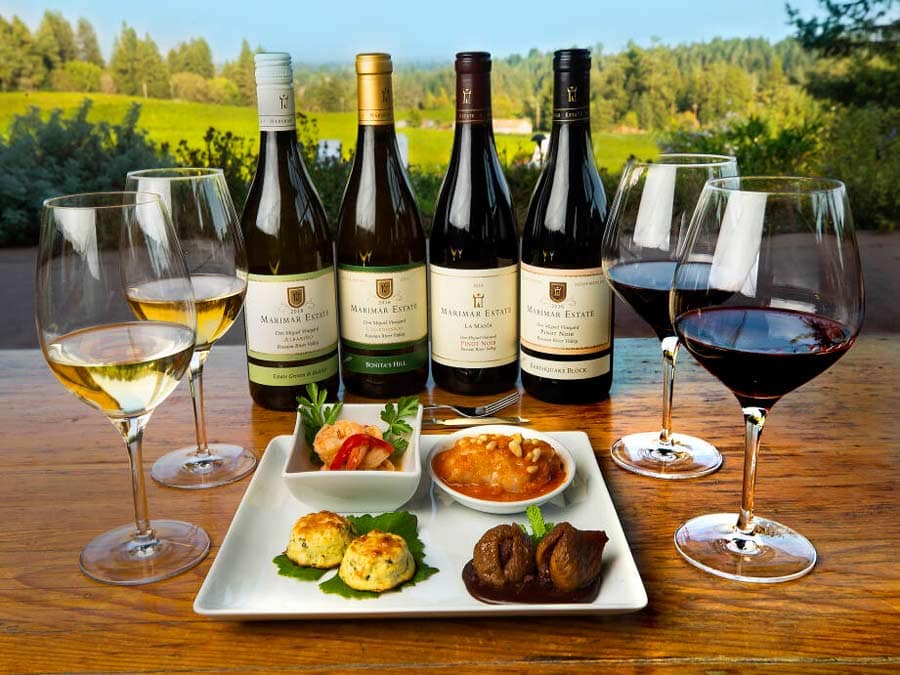
Marimar Estate
Like Pinot Noir, Chardonnay rarely has to share a bottle with other grape varieties in a blend. Unlike Pinot Noir, Chardonnay is vinified in several radically different ways and often bears the signature of the winemaker as much as that of the vineyard or the region. The best Sonoma County Chardonnay makes it possible to appreciate both.
The “oaky, buttery Chardonnay” flavor profile, now an international wine style recognized in wine regions around the world, is the product of winemaking decisions and techniques. Using a high percentage of new, toasted oak barrels lends the wine aromas ranging from campfire smoke to roasted almond to coconut. The aromatic suggestion of butter or cream is a product of a process blocked in most other white wines: malolactic (or ML) fermentation, in which lactic acid bacteria transform malic acid (a tart acid prevalent in apples) into lactic acid (a softer, creamier acid prevalent in dairy products). When ML is employed on Chardonnay, a byproduct called diacetyl adds to the buttery effect.
A winemaker may choose to vary the character of a buttery-oaky Chardonnay by using more or less new oak, different strains of bacteria, or altering the temperature during fermentation. The buttery-creamy aromas and mouthfeel of such Chardonnay may be further shaped by employing batonnage, the French term for using a metal rod to stir the slurry of dead yeast cells that collect on the bottom of a barrel as a wine ferments.
In recent years, the “unoaked Chardonnay” style has been making a commercial comeback—though it rarely attracts critical acclaim. Crisp, refreshing, and a little floral, these wines are generally made by swapping new oak barrels for stainless steel tanks, and by blocking ML.
The main Chardonnay trend is toward a blend of styles. Look at a winery’s technical data sheet for their Chardonnay, and you may find that it was fermented partially in stainless steel, partially in oak barrels, and that some/no/all ML was blocked. In Sonoma County Chardonnay, the stylistic variations are unlimited.
Chardonnay is especially important in Sonoma County sparkling wine. Typically, California sparkling wine displays more primary fruit flavors than wines grown in the chilly Champagne region of France. However, in the cooler regions of Sonoma County, the grape retains enough natural acidity to make vibrant brut and blanc de blancs sparkling wine.
Sonoma County’s Key Chardonnay Regions
Russian River Valley
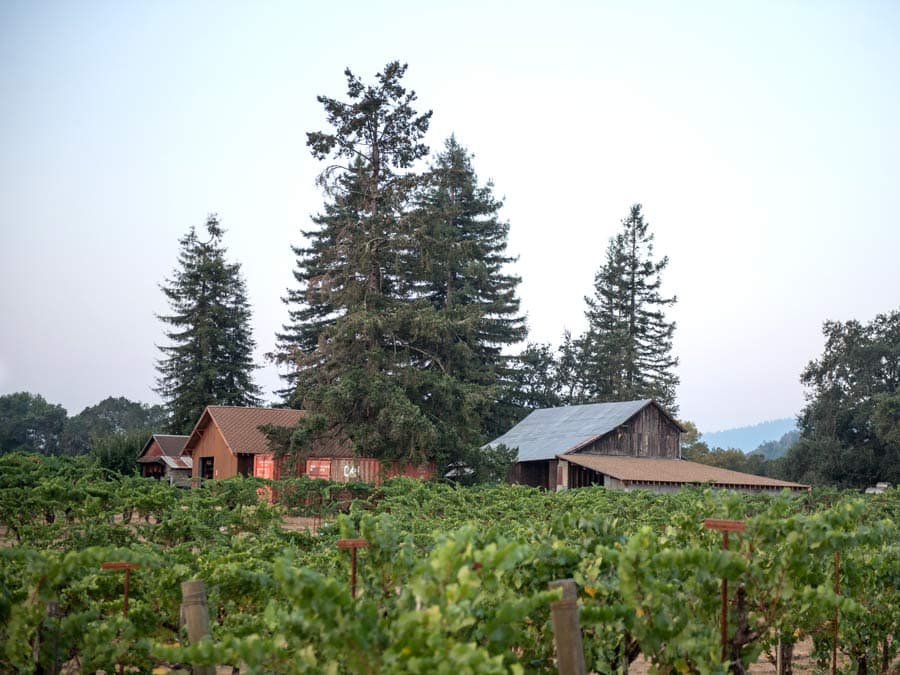
A good portion of Chateau Montelena’s “Judgement of Paris” wine came from the Bacigalupi Vineyard, planted in 1964 off Westside Road. Also in the 1960s, Dutton Ranch was among the first to plant Chardonnay.
Within the AVA, the Green Valley of Russian River Valley region is a cool, foggy pocket where Chardonnay retains higher acidity for excellent methode champenoise sparkling wine.
Wineries: Bacigalupi, Rochioli, Dutton-Goldfield, Taft Street, Martinelli, Korbel, Iron Horse.
Sonoma Coast

Somewhat of a catch-all AVA that encompasses much of the Russian River Valley and Carneros, Sonoma Coast also includes the new Petaluma Gap and Fort Ross-Seaview AVAs. Chardonnay grown in cool coastal zones often develops the acidity and structure needed to wear new French oak with grace.
Wineries: La Crema, Sonoma-Cutrer, Marimar Estate, Fort Ross.
Sonoma Valley and Bennett Valley
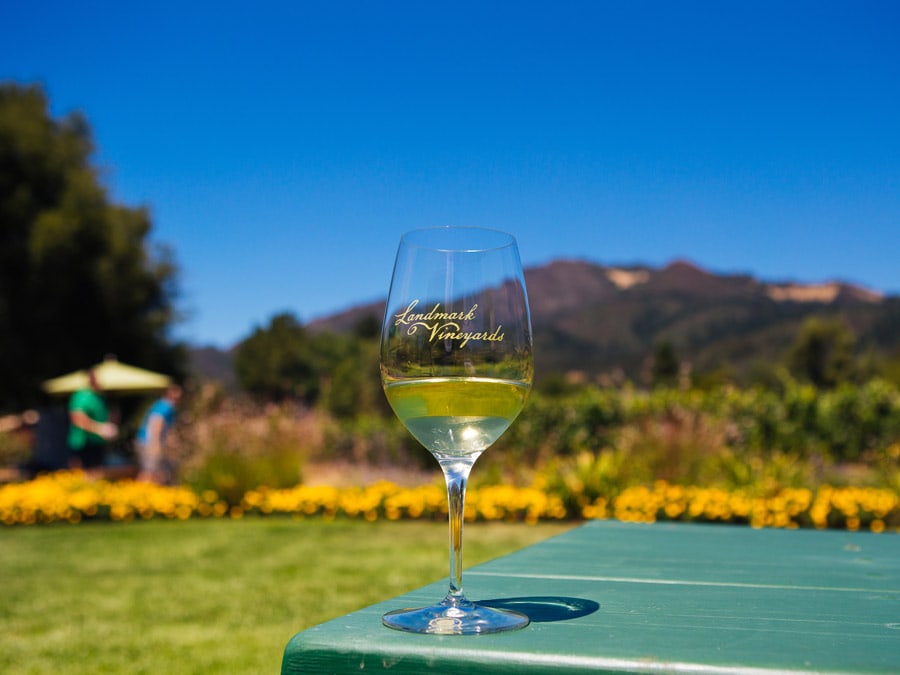
Not much publicized as Chardonnay regions today, Sonoma Valley and its sub-appellation, Bennett Valley, are the site of several firsts in Chardonnay: In the hills above the town of Sonoma, Hanzell Vineyards pioneered temperature-controlled fermentation and the use of small oak barrels; in the 1980s, Matanzas Creek was a leader in the big, buttery style-and was able to charge a then-unheard-of price-but their style has refined with the times.
Wineries: Hanzell, Matanzas Creek, Landmark, Chateau St. Jean, Kunde, Buena Vista.
Carneros
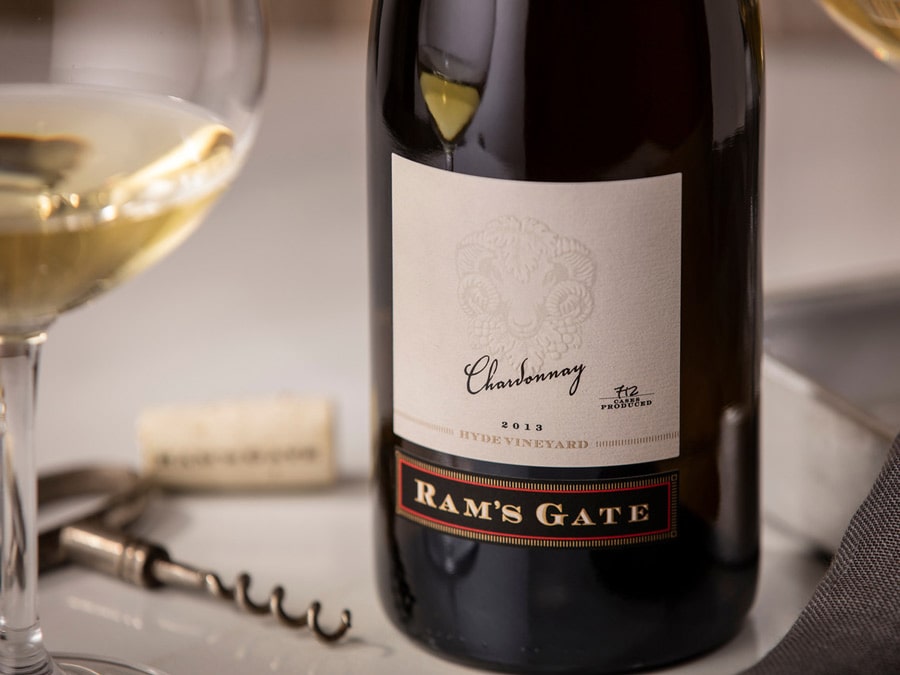
Temperatures in the Carneros are influenced by breezes from San Pablo Bay, making for a cool, windy, but relatively stable growing season. Chardonnay for sparkling wine is particularly important in the Carneros.
Wineries: Anaba, Ceja, Cline Family, Gloria Ferrer, Ram’s Gate.
Alexander Valley and Knights Valley
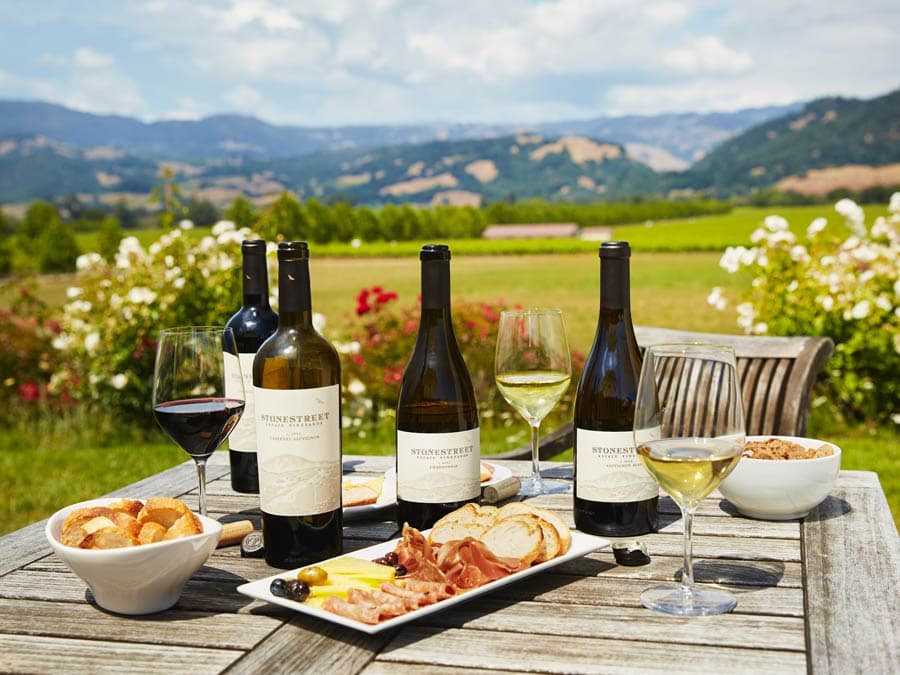
These are Sonoma County’s warmest growing regions, yet Chardonnay thrives here alongside Cabernet Sauvignon.
Wineries: Alexander Valley Vineyards, Jordan, Robert Young, Rodney Strong, Stonestreet, Stuhlmuller.
Find out more about Sonoma County’s wine regions.
Written by Sonoma Insider James Knight.
Places Mentioned
THIS IS WINE COUNTRY.
Share your experience using #SonomaCounty or #LifeOpensUp
